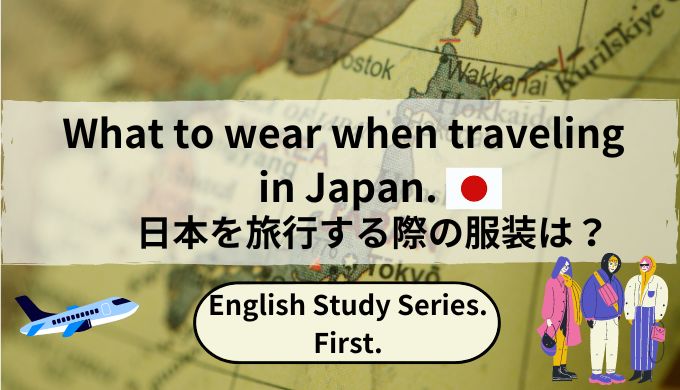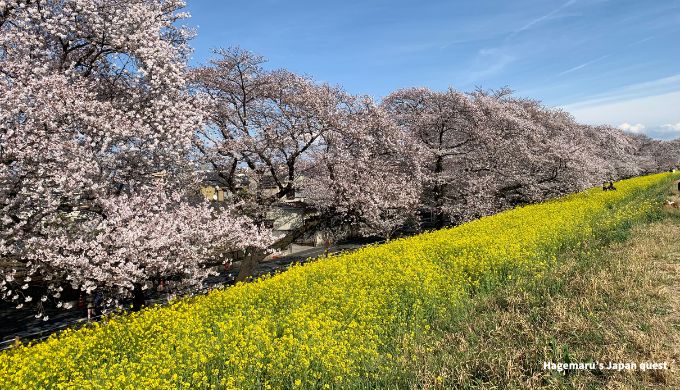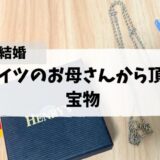ハゲ丸🇩🇪の妻、ともえもんです。今回から、私の勉強シリーズで「英語で記事を書く」ということをやっていきたいと思います。
間違った単語や、文法があるかと思いますが優しく読んでいただけると嬉しいです。また、日本語訳も載せる予定なので、日本語を勉強している方もぜひ参考にしてみてください。
よろしくお願いいたします😊まず第一弾目、「日本へ旅行に行くけど服装はどうしたら良い?」をまとめてみました。
I am Tomoemon, wife of Hagemaru 🇩🇪. Starting this time, I would like to start my study series on “writing articles in English”.
I am sure there will be wrong words and grammar, but I hope you will read it kindly. I will also be posting Japanese translations, so if you are studying Japanese, please take a look at them as well.
First of all, I put together a list of “I’m going on a trip to Japan, what should I wear?” Here is a summary.
Thank you for your cooperation😊
目次
Choosing What to Wear When Traveling to Japan.
Japan is said to have four seasons. In recent years, however, data show that the summer season has become longer.
For all visitors to Japan, we would like to introduce you to clothing suited to each season temperatures vary depending on the location in Japan you are visiting.
The following introduction is limited to the Tokyo area.
🇯🇵日本には4つの季節があると言われています。しかし、近年は夏が長くなっているというデータもあります。日本を訪れるすべての人に、それぞれの季節に合った服装をご紹介しようと思います。
ここでは東京近郊に限定してご紹介します。
Spring Season.
Temperatures depending on the location in Japan you are visiting. The following introduction is limited to the Tokyo area.
From March until May, Tokyo enjoys a warm and mild climate, with March still being a cold winter month with an daily average temperature of about 11°C. From late March, cherry blossoms start to bloom in many areas and in April, the average daytime temperature rises to about 14 degrees Celsius, with a high near 20 degrees Celsius, making for pleasantly warm weather.
Hagemaru🇩🇪 wears short sleeves and long pants during the day. It is recommended to bring a light jacket for chilly nights.
🇯🇵3月から5月にかけて、東京は暖かく穏やかな気候となりますが、3月はまだ冬の寒さが残り、1日の平均気温は11℃前後です。3月の中旬から下旬になると、関東各地で桜が咲き始めます。4月に入ると日中の平均気温は14℃前後まで上がり、最高気温も20℃近くまで上がるため、過ごしやすい日が続きます。
ハゲ丸🇩🇪は、日中は半袖、長ズボン。肌寒い夜には薄手の上着を持参することをおすすめします。
Summer Season.
June and the first half of July is the rainy season. As soon as the rainy season ends, the weather becomes really hot. The sun is very strong, so short sleeves and short pants are the best clothing. People with sensitive skin are advised to wear sunscreen.
Air conditioning runs in almost 100 percent of buildings in Japan. You may take a break at a cafe to cool off.
🇯🇵6月と7月の半分は梅雨の季節で、梅雨が終わるととても暑くなります。太陽の日差しが強いので、服装は半袖、半ズボンがベスト。肌の弱い人は日焼け止めを塗ることをお勧めします。
日本の建物のほぼ100%で冷房が効いているため、涼むためにカフェで休憩しても良いと思います。
Fall Season.
It is not until the beginning of November that the Tokyo landscape becomes more colorful. Summer in Japan is long, and even in November there are days when you can still wear short sleeves.
Bring short sleeves during the day and a light jacket at night. Autumn in Japan is sometimes visited by typhoons. Check the weather news.
🇯🇵東京の景色が紅葉で色鮮やかになるのは11月に入ってからです。日本の夏は長い傾向にあり、11月でも半袖で過ごせる日があります。日中は半袖、夜は薄手のジャケットを持参します。日本の秋には台風が来ることもるので、天気予報をチェックしましょう。
Winter Season.
The average maximum daytime temperature is about 13 degrees Celsius and the average minimum temperature is about 6 degrees Celsius. Autumn is over, and winter will begin in earnest around the beginning of the year in January. During sightseeing, visitors should be aware of the temperature difference between day and night. If even 1 cm of snow accumulates in Tokyo, public transportation may stop working.
🇯🇵日中の平均最高気温は約13度、平均最低気温は約6度くらい。秋が終わり、年明けの1月頃から本格的な冬が始まる。観光の際は、昼夜の気温差に注意が必要です。東京では1cmでも雪が積もると、公共交通機関が止まることがあります。
Summary.
If you can stay for an extended period of time, it would be fun to experience the four seasons in Japan.
🇯🇵もし日本への長期滞在が可能ならば、日本の4つの季節を体験するのも楽しいと思います😊
最後までお読みいただきありがとうございました😊 Thank you.
📸Instagram:https://www.instagram.com/germany_speyer/







